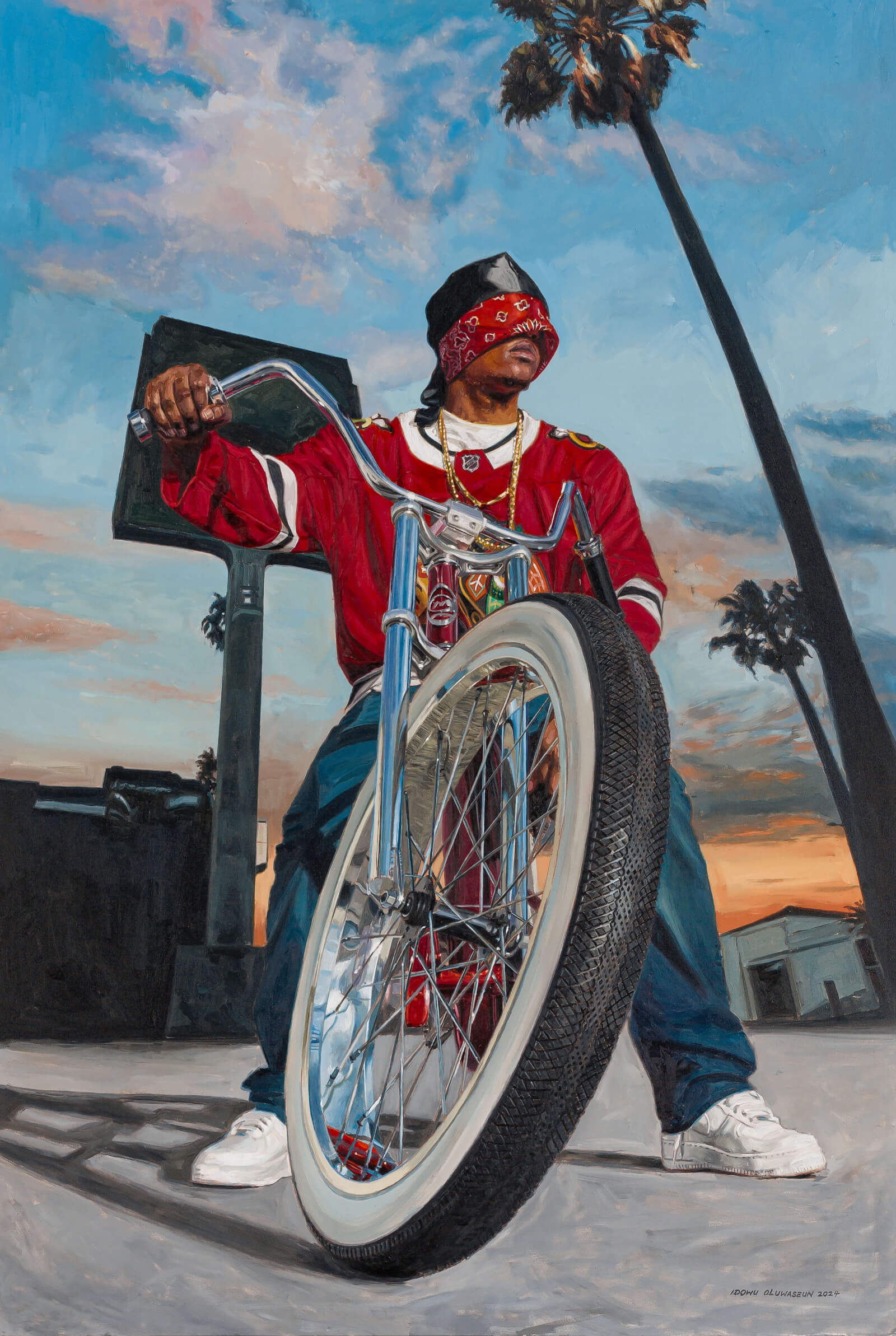Idowu Oluwaseun
Poetic Culture
➝ Download Press Release
In the 1970s, the Hip-Hop Movement emerged in New York City’s South Bronx. A movement that sought to create safe public spaces (safe spaces) for Afro-American, Latin American, and Afro-Caribbean youth where individuals can be allowed to move freely and within which socio-political action can grow. This Hip-hop movement is an integral part of Black Culture. Black Culture is a peripheral cultural form that gives voice to the African-American community on the margins of urban America. Social action and political resistance are echoed in rap lyrics, graffiti,…The movement became a global phenomenon that now forms an integral part of our society. The lyrical aspect, such as rapping combined with musical beats and the visuals such as music videos, are the most well-known today.
Through its beats, poetic lyrics and powerful images, hip-hop offers a platform for cultural expression, holds up a mirror to society, and provides a description of the world and its sometimes bleak reality that African-Americans face, such as police brutality and discrimination. At the same time, hip-hop has given groups from the margins the opportunity to engage in identity formation and self-expression and has penetrated to the center of pop culture.
In Poetic Culture, Idowu Oluwaseun emphasizes that connecting side of the story, how Hip-Hop as a movement creates a sense of pride, belonging and solidarity for individuals. The title of the exhibition is also a nod to the core of the genre, the poetical. Oluwaseun grew up in Lagos, Nigeria in the late 1980s and 1990s. Hip-hop already was a global phenomenon at that time with artists like N.W.A and Eazy-E. Through the Nigerian rap duo Okechukwu Azike and Pretty Okafor, known as Junior & Pretty, he came in contact with the genre. The rap duo used the local pidgin-English as their vehicular language, anchoring the genre in Nigerian music. After moving to the United States, his interest in the Hip-Hop Movement grew into a more intense experience of it.
In this series of paintings, Oluwaseun uses vibrant colours and dynamic compositions that meticulously reflect the rhythm and movement associated with Hip-Hop. This stylistic choice evokes the genre’s power to express emotions and ideas visually, the way music does in an auditory way. The energy in his work reflects the rebellion and transformative power of Hip-Hop, which has long been a voice for the oppressed.
Oluwaseun’s canvases depict the typical looks, poses that feel well-known and familiar, instantly carrying a touch of nostalgia. As a viewer, you are catapulted back to the days of baggy jeans, oversized shirts, flashy sneakers, grillz, an array of gold jewellery, pimped cars, lowriders, and the ubiquitous bandana. His affinity for fabrics is thus closely intertwined in his paintings, making it again an essential element in this exhibition.
The faces of the subjects in these paintings are partially covered with bandanas, referencing the invisibility and marginalisation that African-Americans often face. This ‘facelessness’ emphasizes also how Black Culture and the Hip-Hop Movement are often commercialized and consumed without recognition of the individuality and humanity behind it. The image of hip-hop displayed by mainstream media today, black rappers surrounded by expensive cars, senseless violence and women reduced to sex symbols is far removed from how it once started in the South Bronx. Thus, Idowu’s paintings critique this commodification and commercialization and provide a complex exploration and refection of cultural ownership, appropriation and authenticity.
Amber-Luna Defauw

